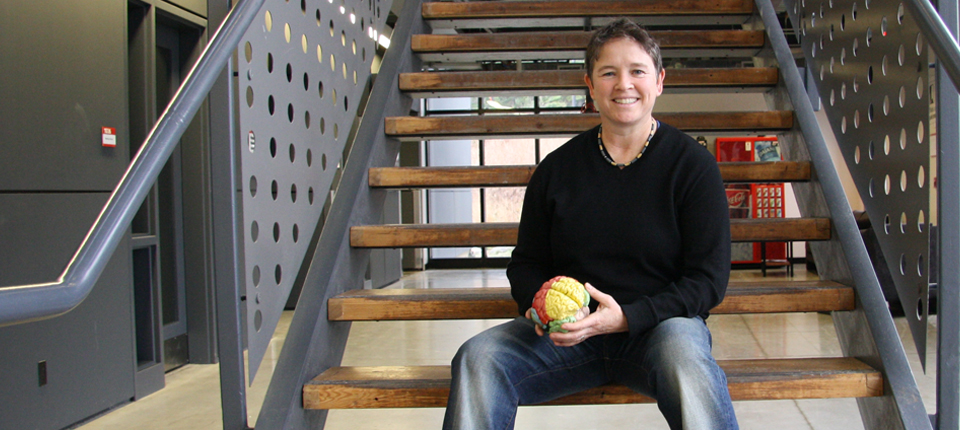Why is the wounded brain having trouble thinking and moving at the same time?
Lauren Sergio’s excitement for the fundamentals of how the brain controls movement is exceeded only by her passion to use research to improve people’s lives. Sergio explores how thinking and moving at the same time becomes difficult for people with pre-dementia, as well as for those recovering from concussion and stroke. Her work has been applied in organizations ranging from hospitals to the NHL.
Inspiration
I have children, one of whom is a hockey goalie, and I have family members with dementia. I want to be able to help with the stress levels of people like me in the sandwich generation. I see a lot of people with kids playing sports and older parents with health issues, and both are a source of worry and stress.
Impact
Whether you’re a 14-year-old female hockey player with a concussion, or an 84-year-old man with dementia, in both scenarios there is a breakdown in communication between the parts of the brain that control thinking and moving.
I study how the brain controls movement, specifically eye-hand coordination. A key finding is that combining thinking and moving at the same time has turned out to be a very sensitive way to assess brain dysfunction. Right now, it can be months or even years before any of the standard tests flag potential brain processing problems. But my lab has developed tests related to eye-hand coordination – simple tasks done on a tablet, such as needing to sweep your finger left to make an object move right – that seem to be better at identifying issues because they force different parts of the brain to talk to each other.
In our concussion research, for example, we have players complete the tasks at the start of the season so that we have a baseline we can compare against if they get injured. We see that kids aren’t really getting back to the baseline until something near 18 months, when the current thinking is that recovery from a concussion can take 10 days to a month. I see this tool allowing coaches and healthcare providers to have a better metric for when a person is really able to return to play or to work. It’s also nice to be able to offer parents something concrete, like “Your son is doing well on these tests, but he’s not back to where he was, so I think he should stay off the ice for a little longer.” It takes away the guessing, and I think that helps people.
Connections
Collaborations outside of the university are essential for this kind of research involving athletes and patient groups. At Southlake Regional Health Centre, where I’m appointed as a Research Scientist, I supervise a number of students on different projects. Related to my own research, one of these examines the use of video games for stroke recovery. We are having people who have just had strokes use an accommodated Wii system to play games, and are exploring whether this increases neuroplasticity (the brain’s ability to cope with the damage caused by the stroke). We know from examining the brains of skilled gamers that they have some different pathways, and their brains are able to process things differently. And anyone who has been or seen someone be addicted to a video game knows the motivational circuits for video games are strong. Our study at Southlake attempts to combine these two things to maximize early activity in the critical first month following a stroke.
What’s Next?
I’d like the concussion and dementia tools we’ve developed to become widely available. My research is ultimately funded by taxpayers – I think it’s important to give back. I’d like to have a free version of the tools available to everyone, and a deluxe version for healthcare providers.
I also want to work on prevention. There is some preliminary evidence in people who are at risk for dementia that if you keep training the brain over a period of time, you might stave off decline. We want to develop a tool with interactive tasks that will challenge the brain to test its connections and the pathways.


